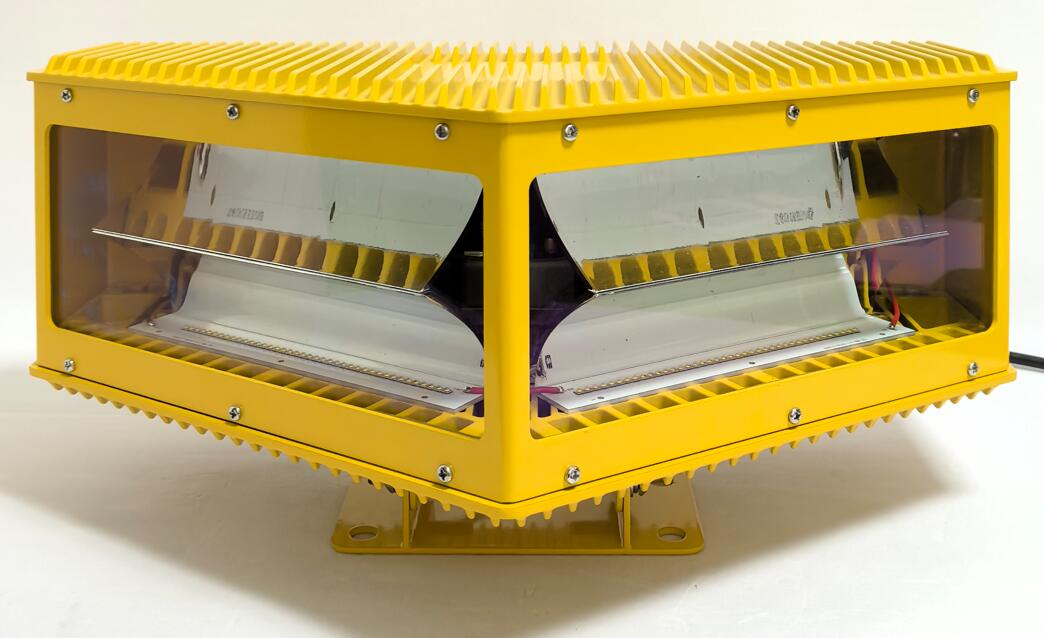Aviation Warning Light Systems: Safeguarding Skies Through Illumination
In our vertically expanding world, aviation warning lights have become silent guardians of flight safety. These specialized illumination systems protect aircraft from potential collisions with man-made structures, creating a visible language that pilots understand across all weather conditions and times of day. This article examines the critical role of aviation warning lights in modern airspace management, exploring their technological evolution, regulatory framework, and innovative applications.
1. The Critical Role of Aviation Warning Lights
Aviation warning lights serve as:
Visual sentinels marking tall structures
All-weather communicators for pilots

Regulatory compliance tools for structure owners
Collision prevention systems in congested airspace
| aviation warning light |
Their importance has grown exponentially with:
Increasing urban density (skyscrapers grew 24% taller in the last decade)
Expanding wind energy infrastructure (global capacity doubled since 2015)
| aviation warning lights |
Growing air traffic (projected to double by 2040)
2. Modern Lighting Technologies
LED Revolution
Contemporary systems predominantly use LED technology because of:
Operational superiority: Instant activation, no warm-up period
Energy efficiency: 80% less power than traditional systems
| aviation warning lights |
Durability: 5-10x longer lifespan than incandescent alternatives
Adaptive brightness: Automatic intensity adjustment for visibility optimization
Smart System Integration
Next-generation features include:
Remote monitoring via IoT connectivity
Automated fault detection systems
Synchronized flash patterns across multiple structures
Predictive maintenance algorithms
3. Regulatory Framework & Standards
Global Compliance Requirements
All systems must adhere to:
ICAO Annex 14: Defines light intensity, color, and flash patterns
FAA AC 150/5345-43J: Specifies photometric performance
EASA CS-ADR-DSN: European technical standards
Regional Variations
Key differences exist in:
Structure height thresholds requiring lighting
Specific color requirements (red vs. white)
Backup power duration mandates
Inspection frequency requirements
4. Specialized Applications
Urban Environments
High-rise building integration challenges
Light pollution mitigation techniques
Architectural lighting dual-purpose solutions
Renewable Energy Sites
Wind turbine-specific mounting solutions
Radar-friendly lighting configurations
Offshore platform marine/aviation hybrid systems
Temporary Installations
Rapid-deployment systems for construction cranes
Portable battery/solar-powered units
Magnetic base solutions for temporary structures
5. Installation Best Practices
Site-Specific Considerations
Terrain and elevation analysis
Local weather pattern impacts
Air traffic density evaluation
Wildlife interaction potential
System Design Principles
360-degree visibility assurance
Backup power redundancy
Future expansion capability
Maintenance access planning
6. Emerging Innovations
The next frontier includes:
Li-Fi enabled data transmission capabilities
AI-optimized flash pattern adaptation
Self-powered piezoelectric systems
Holographic projection warning alternatives
Drone-detection integrated systems
7. Performance Verification
Critical testing protocols involve:
Photometric validation
Environmental stress testing
Long-term reliability assessments
Cybersecurity evaluations for smart systems
Aviation warning light systems represent a perfect synergy of regulatory necessity and technological innovation. As our built environment continues reaching skyward and airspace becomes increasingly congested, these systems will play an even more vital role in global aviation safety. The ongoing transition to intelligent, connected lighting solutions promises to enhance their effectiveness while reducing operational burdens.
